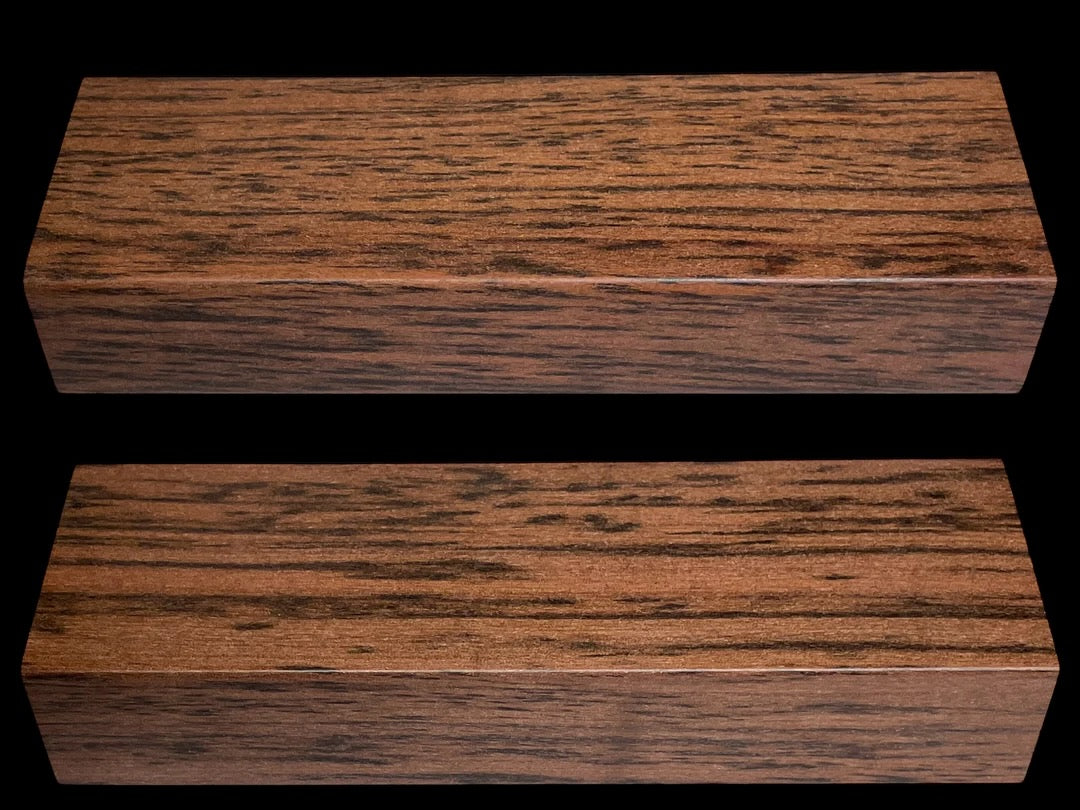
Tiger Myrtle
Tiger Myrtle refers to wood from the Nothofagus cunninghamii (Myrtle Beech) or related species like Lophozonia menziesii, native to Tasmania and southeastern Australia, often found in cool temperate rainforests. The “tiger” designation highlights its distinctive figuring, resembling tiger stripes. These trees grow to 30–55 metres tall with trunk diameters of 1–2 metres, thriving in wet, high-altitude forests with rich, loamy soils.
The heartwood of Tiger Myrtle is a warm pinkish-brown to reddish-brown, often with a golden hue, featuring dramatic, wavy figuring that creates tiger-like stripes or flames in quartersawn pieces. These stripes are caused by interlocking grain and medullary rays, giving a three-dimensional, chatoyant effect. The sapwood is pale cream, distinctly separate. The grain is fine and even, with a smooth texture and a high natural lustre that polishes to a glossy finish, enhancing the tiger pattern.
Tiger Myrtle has a density of around 700–750 kg/m³, making it a moderately hard and strong wood with good stability once seasoned. It’s moderately durable but not naturally resistant to decay or insects, so it’s best suited for indoor use unless treated. The wavy grain can cause tearout during planing, requiring sharp tools, but it turns, glues, and finishes well, with oil-based finishes accentuating the tiger figuring’s depth and shimmer.
When worked, Tiger Myrtle has a mild, slightly sweet scent, typical of many Australian hardwoods, with no strong aroma. In the UK, it’s prized for high-end furniture, cabinetry, and veneer, where its striking tiger stripes can be showcased—think elegant table tops or decorative panels. It’s also used for turned objects like bowls or pen blanks, often in bespoke craftsmanship, where its unique figuring adds a luxurious touch.
Tiger Myrtle is rare and expensive due to limited supply and the specific conditions needed for the tiger figuring, which isn’t present in all trees. While not listed on CITES, some Nothofagus species are considered vulnerable due to logging and habitat loss in Tasmania. In the UK, it’s typically imported as specialty lumber or veneer, making it a premium choice for projects where its dramatic appearance can be the focal point.
